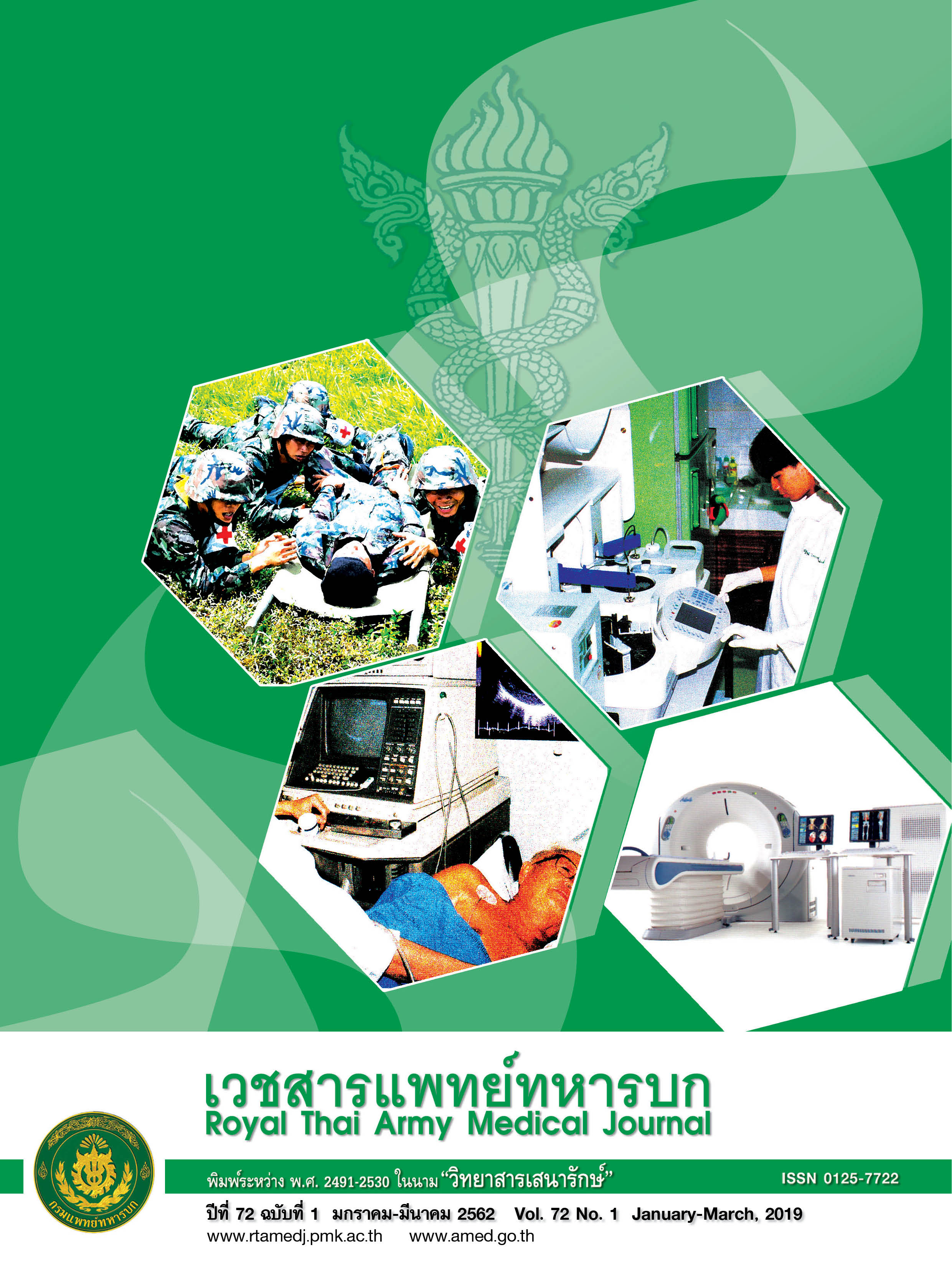Incidence and Associated Factors of Military Static Line Parachute Injuries in Basic Airborne Trainees
Main Article Content
Abstract
Abstract:
Background: There is currently no information about incidence and associated factors of parachute injuries specifically for Thailand context. Objective: To determine the incidence and associated factors of military static line parachute injuries in basic airborne trainees. Methods: A prospective cohort study was conducted among 992 military personals who attended the basic airborne training program during February-July 2018. Information sheets were used to collect data about: (a) personal demographics, (b) environmental condition surrounding the parachute practice, and (c) parachute related injuries. The incidence rate of the injury was then calculated and its risk factors determined by analyzing Multi-level Poisson Regression and using the Incidence Rate Ratio (IRR) and 95% confidence interval (95%CI) as the risk measure. Results: There were 166 parachute related injuries from the total of 4,677 jumps, with the incidence rate of 35.50 per 1,000 jumps (95%CI: 30.04-41.21). Factors significantly related to parachute injury were jump with equipment versus without equipment [Adjusted IRR 95%CI: 1.28 (0.88-1.87)], increasing wind speed per 1 knot [1.54 (1.27-1.87)], airplane versus helicopter exit [1.75 (0.68-4.55)], side versus rear exit [2.13 (1.43-3.23)], night versus day jumping [2.19 (0.81-5.90)], and presence of motion sickness [3.43 (1.93-6.92)]. Conclusion: To prevent military static line parachute injuries, following factors should be taken into consideration: type of aircraft, aircraft exit, jump timing, equipment, motion sickness and wind speed.

